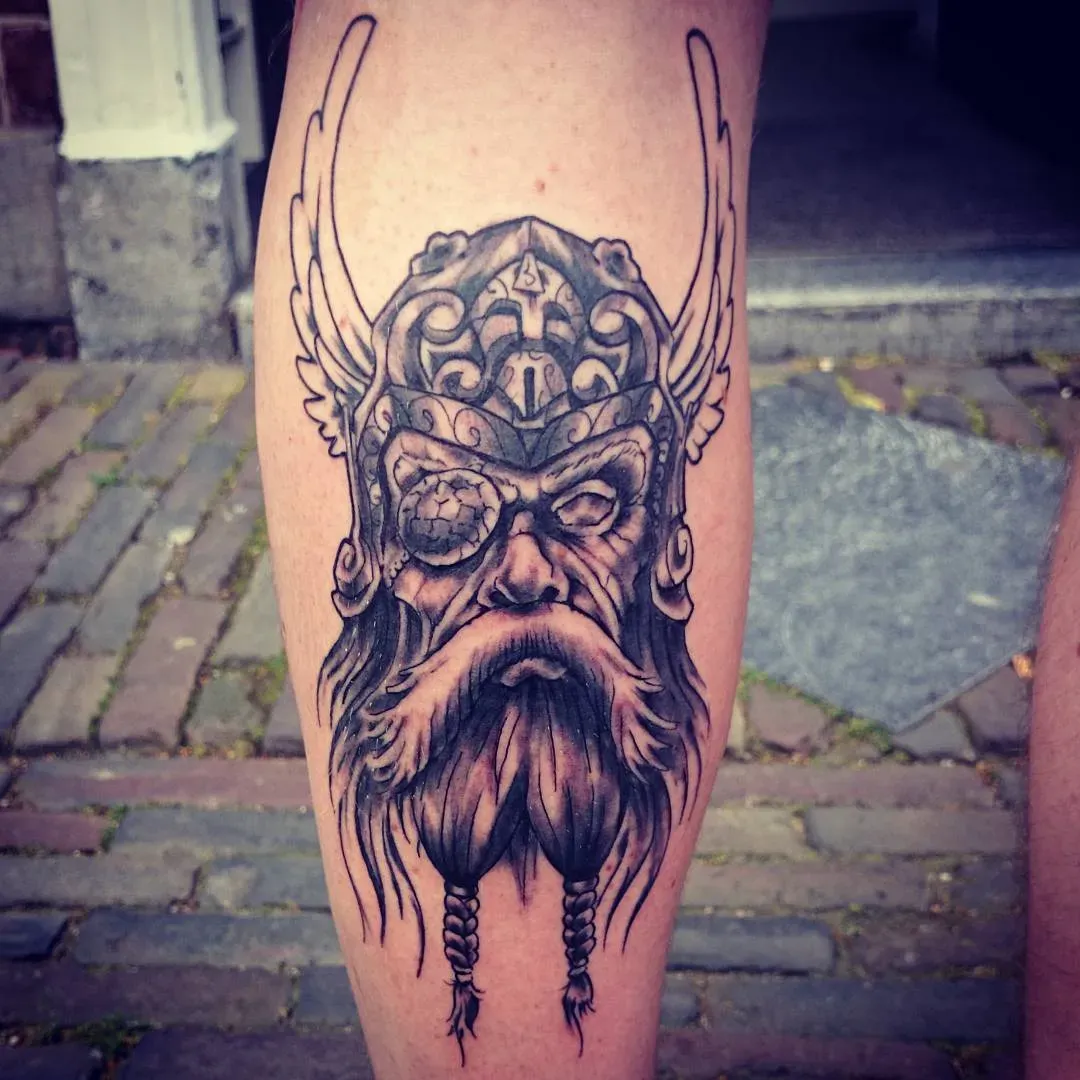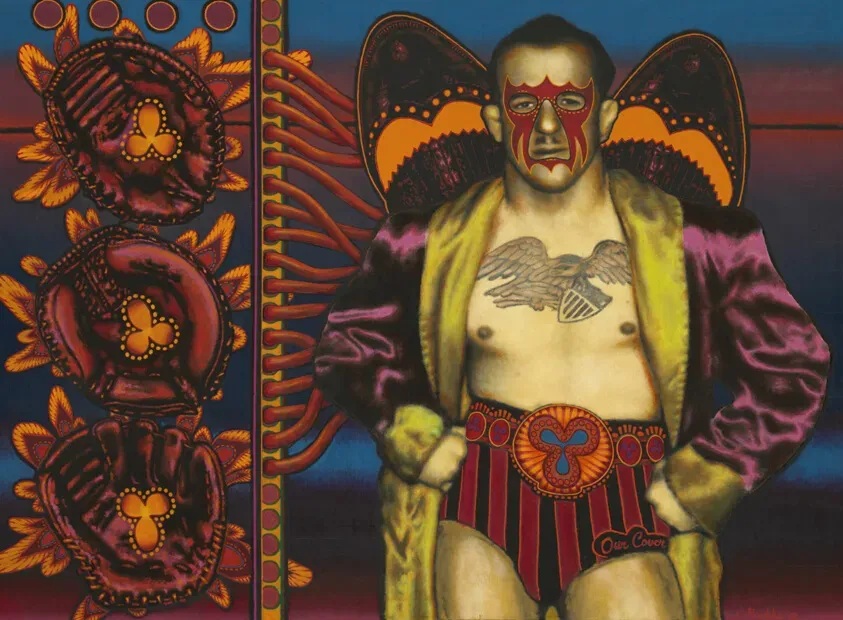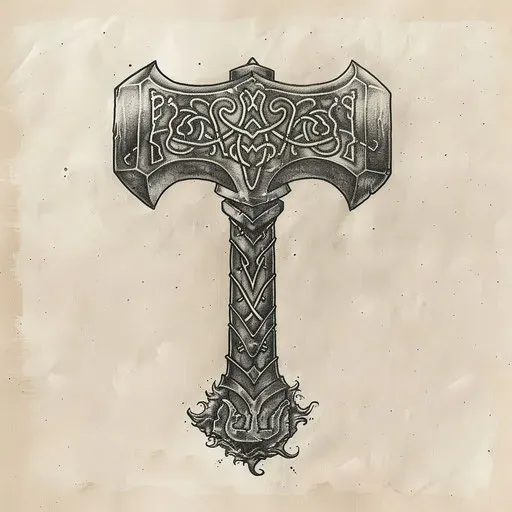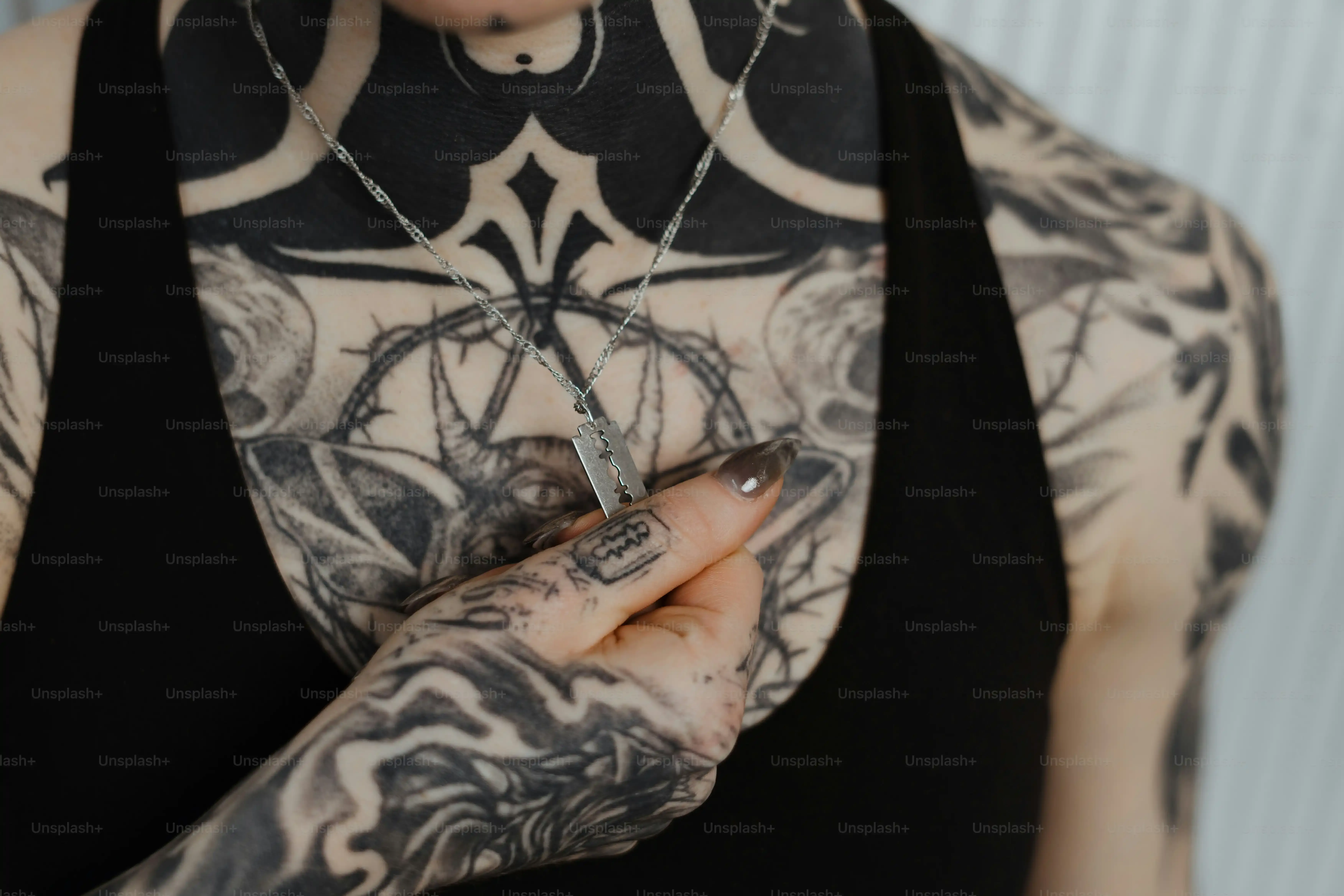Table of Contents
Thinking about getting a Viking tattoo? You're not alone. More people are drawn to the power and history behind viking tattoo designs every year. Maybe you're fascinated by the Norse gods, the warrior spirit, or the intricate knotwork. But diving into this world means more than just picking a cool image off the internet. These designs carry weight, history, and often, deep personal meaning. Getting it wrong isn't just a bad drawing; it's missing the point entirely.
More Than Just Ink: Why People Choose Viking Tattoos
More Than Just Ink: Why People Choose Viking Tattoos
Hooked on History and Raw Power
So, you're digging into why folks get these Viking tattoos? It's not just a random fad, trust me. There's a pull towards that era, that sense of a life lived on the edge, connected to nature and myth in a way most of us aren't today. People see the Vikings and think of resilience, exploration, and a certain raw, untamed spirit. It’s a romanticized view, sure, but powerful nonetheless. They weren't just raiders; they were skilled artisans, navigators, and storytellers. Getting a tattoo linked to that history feels like tapping into something ancient and enduring. It's a statement that goes beyond just liking the look; it's about aligning yourself with a perceived strength and a connection to the past that feels absent in modern life.
Personal Connection and Aesthetic Appeal
Beyond the broad historical appeal, the reasons get personal. For some, it’s about heritage – tracing roots back to Scandinavia or other areas influenced by Norse culture. It's a way to wear that ancestry on their skin, a permanent nod to where they came from. Others admire specific Viking traits – courage in the face of overwhelming odds, loyalty to their kin, or a fatalistic acceptance of destiny. The aesthetic plays a huge role too. The intricate knotwork, the powerful imagery of gods like Thor or Odin, the stark beauty of runes – these aren't just simple pictures. They are complex, often symmetrical, and visually striking designs that lend themselves incredibly well to body art, especially larger pieces like sleeves or back panels. It’s a style that demands attention.
Why do people choose these designs?
- Connection to Norse history and mythology.
- Admiration for perceived Viking traits like strength and resilience.
- Expression of Scandinavian heritage.
- Appreciation for the unique aesthetic of Norse art.
- A desire for a tattoo with deep, symbolic meaning.
Decoding the Symbols: Popular Viking Tattoo Designs and Their Meanings
Decoding the Symbols: Popular Viking Tattoo Designs and Their Meanings
Beyond the Horns: Understanding Core Symbols
Alright, let's talk symbols. Forget those horned helmets you see in cartoons; real Viking art is way more complex and meaningful. When people look at viking tattoo designs, they're often drawn to things like the Mjölnir, Thor's hammer. This wasn't just a weapon; it was a symbol of protection, consecration, and strength. Wearing it, or tattooing it, was believed to invoke Thor's power against chaos and evil. Then you have the Valknut, those three interlocking triangles. Its exact meaning is debated by scholars, but it's often linked to Odin, death, and the afterlife – specifically, welcoming fallen warriors to Valhalla. It's a heavy symbol, definitely not one to get just because it looks cool without knowing the history.
Runes, Serpents, and World Trees
Runes are another big one in viking tattoo designs. These were the letters of the ancient Norse alphabet, but they were also believed to have magical properties. People used them for inscriptions, divination, and protection. Getting a single rune or a bindrune (multiple runes combined) requires knowing what each symbol represents – getting the wrong one could be awkward, or worse, completely inaccurate historically. The Midgard Serpent, Jörmungandr, is also popular, often depicted biting its own tail (Ouroboros style). It symbolizes the cyclical nature of life and the massive, untamed forces of the world. And you can't talk Norse symbols without mentioning Yggdrasil, the World Tree, the center of the cosmos connecting the nine realms. It represents connection, life, and fate. These aren't just pretty pictures; they're cosmology etched into skin.
Common Viking Symbols and Possible Meanings:
- Mjölnir (Thor's Hammer): Protection, Strength, Consecration.
- Valknut: Odin, Fallen Warriors, The Afterlife (meaning debated).
- Vegvisir (Norse Compass): Guidance, Wayfinding, Not getting lost (literally and figuratively).
- Aegishjalmur (Helm of Awe): Protection, Invincibility in battle.
- Yggdrasil (World Tree): Connection, Life, The Cosmos.
- Jörmungandr (Midgard Serpent): Cycles, Untamed Forces, The World.
- Runes: Letters, Magic, Protection, Divination.
Putting Ink to Skin: Styles and Placement for Your Viking Tattoo Designs
Putting Ink to Skin: Styles and Placement for Your Viking Tattoo Designs
Making the Design Fit Your Body
so you've got the meaning down, you know your Valknut from your Vegvisir. Now, where does this ink actually go, and how should it look? When thinking about viking tattoo designs, placement is key. A massive World Tree sprawling across a back works differently than a small, intricate rune on a wrist. Sleeves are super popular for Norse themes because the knotwork and interconnected symbols lend themselves perfectly to wrapping around an arm or leg, telling a visual story as it flows. Ribs, chests, and backs offer large canvases for detailed scenes, like a depiction of Ragnarok or a pantheon of gods. Smaller symbols, like a single rune or Mjölnir, can fit well on forearms, ankles, or the back of the neck. The style matters too; you can go full traditional Norse art with thick lines and dotwork, or blend it with blackwork, dotwork, or even some modern illustrative approaches. The goal is to choose placement and style that enhances the design and fits the natural flow of your body, not just slapping it anywhere.
Before You Ink: Finding an Artist for Your Viking Tattoo Designs
Before You Ink: Finding an Artist for Your Viking Tattoo Designs
Why Your Artist Needs to Know Their Runes from Their Ramen
you've done your homework on the symbols, you know where you want that massive Jörmungandr to snake across your back, or maybe just a subtle Vegvisir on your forearm. Great. Now comes the part that can make or break your viking tattoo designs: the artist. This isn't just about finding someone who can draw a straight line. Norse art, whether it's knotwork, historical depictions, or runic inscriptions, has a specific style and, often, historical context. You don't want someone who usually does cartoon characters suddenly attempting a complex Ouroboros. You need an artist who either specializes in Norse/Viking/Nordic styles or has a proven track record with intricate blackwork, dotwork, and historical or mythological themes. Look at their portfolio. Does their work show clean lines, smooth shading (if applicable), and attention to detail in complex patterns? Are they just copying images, or do they understand the flow and structure of the art?
Hunting Down the Right Tattooer
Finding the right person for your viking tattoo designs is like finding a good mechanic – crucial and sometimes frustrating. Start by looking at portfolios online, especially on Instagram or dedicated tattoo studio websites. Search for artists who specifically mention specializing in Norse, Viking, or blackwork/dotwork styles. Don't just look at one or two pictures; scroll through their feed. See if their style aligns with what you envision. Once you've narrowed it down, book a consultation. This is your chance to talk through your idea, see if they grasp the meaning behind the symbols you want, and get a feel for their professionalism. A good artist will ask questions, offer input, and be honest about what's possible and what might look terrible down the line. If they seem rushed, uninterested, or just say "Yeah, I can do that" without asking details, that's a red flag flapping harder than a longship sail in a storm. Ask to see healed photos of similar work, not just fresh, shiny ones.
What to Look for in a Viking Tattoo Artist:
- A portfolio showcasing intricate line work, blackwork, or dotwork.
- Experience with historical or mythological themes.
- Clean, healed examples of their work.
- Willingness to discuss the meaning and history behind your chosen symbols.
- Good communication and a professional attitude during consultation.
- They should ask questions about your vision, not just nod along.
Your Saga, Inked
So, you've thought about why these designs grab you, you've peeked behind the curtain of some popular symbols, considered where it might sit on your body, and hopefully, started thinking about finding someone who knows their Vegvisir from their Mjölnir. Getting viking tattoo designs isn't just slapping a cool picture on your arm. It's choosing to carry a piece of history, a personal statement etched into your skin. It's a commitment. Make sure it's a story worth telling, and make sure the artist you choose is the right scribe for your saga.